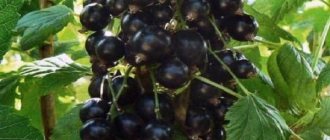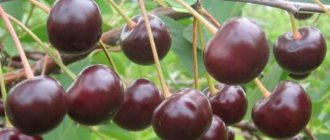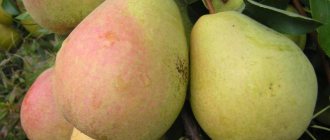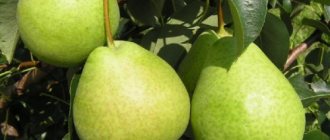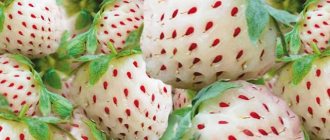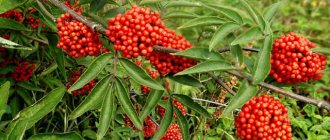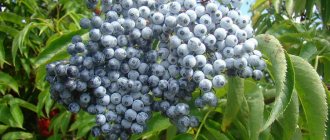Description of viburnum gordovina
Viburnum lantana, or Viburnum lantana, is a deciduous shrub from the Adoxaceae family. It has a dense crown, the shoots are covered with gray cracking bark, young branches and buds have hairy pubescence. The leaves of Viburnum gordovina are long on petioles, ovate with a pointed apex and slightly serrated along the edge. The plates are dark green and rough on top, lighter, tomentose-pubescent underneath.
The decorative period of viburnum gordovina lasts from two weeks to a month
In June, Viburnum viburnum blooms with creamy white buds collected in umbrella inflorescences with long yellow stamens. Then the fruits appear - small round or flattened berries. At the beginning of ripening they are green, then turn red and gradually become black.
Viburnum gourdovina is widespread in Southern and Central Europe, Asia Minor and the Caucasus. It is also found in southern England, Algeria and Morocco. Selects open areas, slopes of ravines and banks of reservoirs, prefers calcareous soils.
Height of viburnum gordovina
Viburnum gourdovina is capable of rising up to 6 m above the ground, and is more like a tree in size. The crown spreads up to 4 m in diameter, while usually maintaining a neat outline.
Are viburnum berries edible or not?
Small fruits of Viburnum gordovina appear after the inflorescences fall and usually fully ripen by October. Ripe black berries are suitable for consumption, they are used for jam and fillings, and used in the preparation of medicines. In this case, it is necessary to observe the measure so as not to encounter side effects.
Warning! Fruits with red skin cannot be eaten; they are not only sour, but also contain many toxic substances that can cause poisoning.
Characteristics of the flowering tree
Viburnum gordovina is not a fast-growing plant, because in a year it only adds 30 centimeters in height. However, the plant has a long lifespan - about 60 years.
The compact dense crown, oval beautiful leaves, which do not lose their attractiveness either in summer or autumn, give the plant excellent aesthetic characteristics.
During the flowering period, which occurs at the beginning of the summer season, viburnum becomes like a bride - large umbrella inflorescences of a whitish-cream, “festive” hue bloom in its crown. The flowering period lasts from 2 to 4 weeks, after which the flowers fall off, and in their place clusters with light green berries appear. Since the ripening period of the berries of the pride is very extended and they all ripen at different times, the clusters look multi-colored, red and black.
Viburnum gourdovina is a fairly unpretentious ornamental plant that strengthens soil that is prone to erosion. In addition, it is resistant to both frost and drought. It takes root well in urban areas, is not afraid of air pollution and can even grow in the shade. Among other things, black viburnum rarely gets sick and is resistant to viburnum leaf beetles.
Varieties of viburnum Gordovina
Viburnum gordovina is popular in ornamental gardening. There are several beautiful and easy-to-grow varieties.
Viburnum gordovina Variegata
Variegata variety is a low viburnum up to 1.5 above the ground with a round and very dense crown. The leaves of the plant are wide, wrinkled, up to 20 cm in length, with small light spots over the entire surface. The variety blooms in May and remains decorative for about a month. In autumn it bears round berries up to 7 mm in diameter with good taste.
The decorative effect of Viburnum Variegata remains throughout the entire season.
Viburnum Gordovina Aureum
According to the description, viburnum pride Aurea, or Aureum, is a shrub up to 2 m tall with pubescent golden leaves of medium size. Bears small yellowish-white flowers in flat umbels. It grows on any soil, withstands drought well and is characterized by increased frost resistance.
To maintain its bright color, Aureum viburnum is best planted in lighted areas
Viburnum Gordovina Mohican
Viburnum Mohican (Mohican) is a tall shrub up to 4 m with a spreading, dense and compact crown. It blooms profusely with creamy white buds in June and bears berries in August - first red, then black, ripening unevenly. Prefers fertile soils, is not afraid of lack of moisture, but does not respond well to swampiness.
Viburnum Mohican grows in sun and semi-shaded areas
Features of culture
Initially, according to the botanical classification, Viburnum belonged to the Honeysuckle family, now scientists classify it as Adoxaceae. The plant belongs to the group of long-lived shrubs. Depending on the type, the height of the bush can be from 1.5 to 4 meters.
Viburnum always reaches out to the light and, with sufficient nutrition and moisture, can grow into a small tree. The plant is distinguished by the fact that on one specimen it has sterile and fruitful shoots, which can be differentiated from each other by the appearance of the crown. A barren shoot always ends with one bud located in the center, while a fruitful branch has two buds with a noticeable growth point in the middle.
Kalina Gordovina (appearance)
Viburnum chokeberry Gordovina was bred as an ornamental plant, although its berries are quite edible. The variety is characterized by a long ripening period, and the fruits ripen unevenly. For this reason, the variety is not grown for industrial purposes, but is used to decorate the site. Sometimes this viburnum is called Felt or Mediterranean.
How to propagate viburnum gordovina
Viburnum gourdovina reproduces well by seeds and vegetative methods. Which method to choose depends on preferences, time of year and site conditions.
By layering
In mid-spring, flexible young shoots of viburnum, located in the lower part of the bush, are bent to the ground and placed in small grooves. The cuttings need to be secured with staples so that they do not straighten out, and watered abundantly throughout the warm season. By autumn the shoots will have their own roots and can be replanted.
When propagating by layering, it is necessary to deepen the middle part of the shoot
Seeds
In mid-autumn, ripe viburnum berries are dried and the seeds are extracted from them, and then placed in damp sand and put in a dark place with a temperature of about 18 ° C for three months. After this, the material is placed in the refrigerator for another three months, after which it is planted in separate small pots or seedling boxes, deepened to a maximum of 3 cm.
Regular watering is provided for the seeds, and when sprouts appear, wait for a few true leaves and carefully transfer the crop to a temporary place in the garden. In open ground, viburnum viburnum is grown for another 2-3 years and only then transplanted to a permanent site.
Viburnum pride from seeds begins to bear fruit after the fifth year of life
Dividing the bush
Young, overgrown bushes can be propagated by dividing the rhizomes. The procedure is carried out in early spring or autumn shortly before the cold weather. The bush is carefully dug out of the ground and cut with a sharp tool, making sure that at least three buds remain on each section. The plants are immediately transferred to the prepared holes and watered abundantly for the next few weeks.
After dividing the bush, the roots of the viburnum gordovina on the cuts can be sprinkled with ash or crushed coal
By cuttings
Viburnum is propagated by cuttings in the summer - in June or July, several shoots about 10 cm long with at least two buds are cut. The lower leaves are removed with an oblique cut, and the upper ones are shortened to half. The cuttings are placed in water with a growth stimulator until roots appear, after which they are planted in a temporary place and grown for another 2-3 seasons.
For cuttings, you need to cut green shoots that have not yet become woody.
How to plant viburnum correctly
Viburnum viburnum (Viburnum lantana) does not have any difficult planting requirements. Only the most basic rules need to be followed.
Landing dates
The plant should be planted in open ground in the fall in mid-October or in the spring before the active growing season begins. In both cases, the viburnum should be at rest, this will allow it to direct its forces to the development of roots.
Requirements for place and soil
Viburnum viburnum should be planted in lighted or slightly shaded places with shelter from strong winds. The best soil for the crop is chernozem or loamy, with good moisture and low acidity. On peat, sand and podzolic soils, the plant develops poorly and often gets sick.
How to plant correctly
About a month before planting the viburnum gordovina, it is necessary to prepare a site for it.
- The selected place in the garden is dug up and enriched with peat and potassium-phosphorus fertilizers.
- Make a hole about 40 cm deep and 50 cm wide.
- When planting several plants at the same time, leave at least 1 m of free space between the holes.
- The dug hole is filled halfway with a mixture of garden soil, humus and peat, 30 g of urea and 250 g of wood ash are added.
- A viburnum seedling is pre-soaked in water for a couple of hours, and then placed in a hole so that the roots lie evenly on the sides of the formed earthen mound.
- Fill with the remaining soil mixture level with the soil and lightly compact it.
After planting, the viburnum is watered abundantly and the tree trunk circle is mulched to slow down the evaporation of moisture.
In order for the viburnum seedling to take root faster, it is recommended to cut the above-ground shoots to 20 cm
Attention! The root collar of the plant is deepened to a maximum of 5 cm, otherwise the crop will not be able to develop.
Caring for viburnum gordovina
Photos and descriptions of the Viburnum gourdovina shrub and its fruits indicate that caring for the plant is not difficult. The gardener is required to observe basic measures that support the life of the crop.
How to water
Viburnum pride loves moisture, so the soil at its roots should not dry out. During hot periods without precipitation, the plant is watered once a week or more often. During rainy and cold months, additional moisturizing may be unnecessary.
How to fertilize
Viburnum gordovina requires fertilizing twice a season. In the spring it is fertilized with minerals high in nitrogen, and in the fall it is supplied with potassium and phosphorus. Shortly before the cold weather, along with digging the soil, you can scatter rotted manure in the tree trunk circle. Organic matter will not only supply the bush with useful substances, but will also insulate its roots when winter comes.
Trimming
Gordovina viburnum bushes require annual sanitary pruning; it is needed to eliminate diseased, broken and dried shoots. The procedure is performed in the spring, before the leaves appear.
To rejuvenate a very old viburnum bush, it can be pruned to stumps.
When growing ornamentally, formative pruning is also carried out as necessary. Young shoots of the plant are pinched so that they do not grow more than necessary. Perennial branches are cut off entirely every 6-10 years. When growing viburnum viburnum in the form of a tree, the side shoots are removed annually, in which case the crop will direct its forces to the development of the central trunk.
Preparing for winter
Viburnum gordovina is distinguished by very high frost resistance and can easily survive cold spells below - 30 ° C. There is no need to cover it along the crown for the winter. It is only recommended to mulch the tree trunk circle with compost or humus with a 10 cm layer to insulate the root system.
Pests and diseases
Viburnum gordovina is distinguished by its excellent resistance to a wide variety of pests and ailments. However, the plant can sometimes suffer from the following misfortunes:
- comma scale insect;
- aphid;
- moth (cap moth).
You can cope with them if you use high-quality insecticides. To combat scale insects, you can use Karbofos. To eliminate aphids, you need to add Trichogramma to it.
The shrub is also sometimes affected by spotting and powdery mildew. Fungicides are used to combat these pathologies. To prevent these diseases, the plant must be regularly treated with tinctures based on garlic and tobacco.
Pride is precisely the culture that does not lose its decorative properties even in the absence of care and in poor environmental conditions. It is ideal for arranging squares, courtyards and streets in large populated areas. In addition, the fruits of this viburnum variety have medicinal properties, which are especially noticeable in combination with honey. Therefore, compotes and other products are often made from them.
Useful properties of viburnum gordovina
The leaves, bark, flowers and fruits of Viburnum viburnum contain a large amount of valuable substances. Includes:
- tanning components and anthocyanins;
- phenolcarboxylic acids;
- sucrose and pectin;
- triterpenoids;
- ascorbic acid;
- chalcones;
- catechins and flavonoids.
The raw materials of the plant are used in folk medicine to prepare decoctions and infusions with a pronounced medicinal effect. Viburnum gordovina is used for diarrhea, it has a fixing effect and soothes spasms in the intestines. Decoctions of the plant are beneficial for gingivitis, laryngitis and stomatitis; they can be used to rinse the mouth and throat to relieve inflammation and eliminate the bacterial process.
